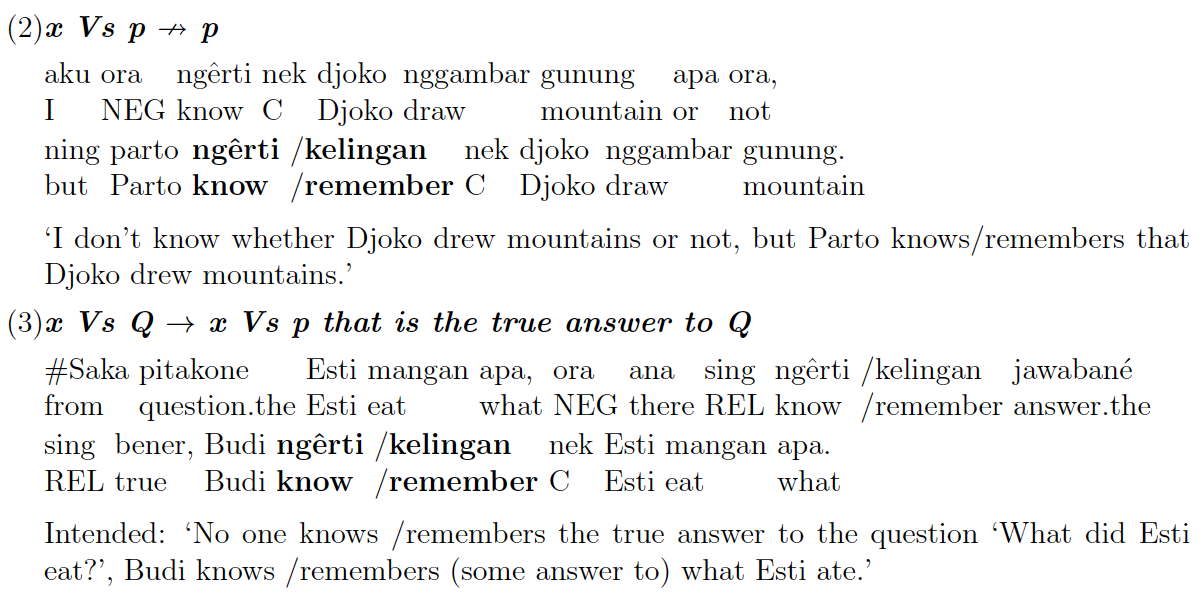Speaker: Tanya Bondarenko (Harvard Universiy)
Title: Veridicality mismatches in Javanese
Time: Wednesday, March 22nd, 1pm – 2pm
Abstract: In this talk I discuss a violation of the Spector & Egré’s generalization about the correlation between veridicality in declarative and interrogative embeddings, (1).
(1)Spector & Egre (2015)’s Generalization:
A responsive predicate is veridical with respect to its interrogative complement (like know + question = knowing the true answer to the question) if and only if it is veridical with respect to its declarative complements as well (know + declarative entails —in fact presupposes— that the declarative is true). (Spector & Egre 2015: 1732)
The counterexample to the generalization comes from Javanese: the verbs `know’ (ngêrti) and `remember’ (kelingan) in this language are veridical with respect to question embedding, (3), but, surprisingly, are not veridical with respect to the declarative embedding, (2).
I propose that this pattern emerges from a combination of two factors: (i) embedded clauses in Javanese are always adjuncts, and compose with verbs as modi ers that specify the propositional content of the verbal eventuality (see Bogal-Allbritten 2016, Elliott 2017, Bochnak & Hanink 2021, Bondarenko 2022, a.o.), which leads to the lack of veridicality with declarative embedding; (ii) propositional content associated with ngêrti `know’ and kelingan `remember’ is required to be a single proposition, which in cases of interrogative embedding triggers insertion of an answerhood operator (Dayal 1996) that gives rise to veridicality. I furthermore show that while ngêrti `know’ is non-veridical with declarative complements, it is different from `think/believe’: it comes with a presupposition that the embedded proposition is not known to be false. I suggest to encode this restriction as a definedness condition on the propositional content associated with the mental state that ngêrti denotes.
References
Bogal-Allbritten, Elizabeth. 2016. Building meaning in Navajo. University of Massachusetts Amherst dissertation.
Bochnak, Ryan & Emily Hanink. 2021. Clausal embedding in Washo: Complementation vs. modi cation. Natural Language & Linguistic Theory. 1-44.
Bondarenko, Tatiana. 2022. Anatomy of An Attitude. MIT dissertation.
Dayal, Veneeta. 1996. Locality in WH-quanti cation: Questions and relative clauses in Hindi. Dordrecht: Kluwer Academic Publishers.
Elliott, Patrick. 2017. Elements of clausal embedding. UCL (University College London) dissertation.
Spector, B. and Egr e, P., 2015. A uniform semantics for embedded interrogatives: An answer, not necessarily the answer. Synthese, 192, pp.1729-1784.
